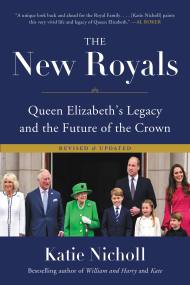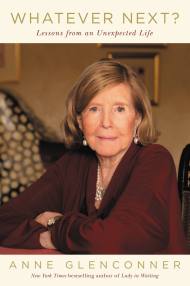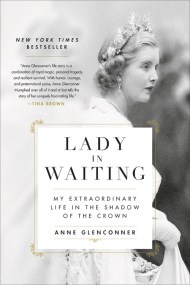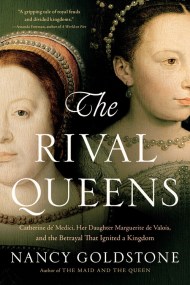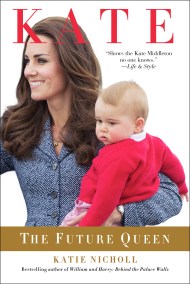Shopping Cart
Elizabeth & Margaret
The Intimate World of the Windsor Sisters
Description
They were the closest of sisters and the best of friends. But when, in a quixotic twist of fate, their uncle Edward Vlll decided to abdicate the throne, the dynamic between Elizabeth and Margaret was dramatically altered. Forever more Margaret would have to curtsey to the sister she called 'Lillibet.' And bow to her wishes.
Elizabeth would always look upon her younger sister's antics with a kind of stoical amusement, but Margaret's struggle to find a place and position inside the royal system—and her fraught relationship with its expectations—was often a source of tension. Famously, the Queen had to inform Margaret that the Church and government would not countenance her marrying a divorcee, Group Captain Peter Townsend, forcing Margaret to choose between keeping her title and royal allowances or her divorcee lover.
From the idyll of their cloistered early life, through their hidden war-time lives, into the divergent paths they took following their father's death and Elizabeth's ascension to the throne, this book explores their relationship over the years. Andrew Morton's latest biography offers unique insight into these two drastically different sisters—one resigned to duty and responsibility, the other resistant to it—and the lasting impact they have had on the Crown, the royal family, and the ways it adapted to the changing mores of the 20th century.
What's Inside
Introduction
Sister, Friend, Judge
Things were different now. No more “Lilibet” this and “Lili- bet” that, the easy informality of two sisters united against the world. Now there was a distance between them, calibrated and barely acknowledged, but a distance nonetheless. The gap shrank when they were together, alone. But with servants and others around, there was a formality. When others referred casually to “your sister,” Princess Margaret would snap haughtily, “You mean the queen.” They had once shared a bedroom; now they were separated by a platoon of pen-pushing gatekeepers who, since Princess Elizabeth’s recent elevation to sovereign, measured out every minute of her busy schedule. There was no longer any question of barging in unannounced—a habit their uncle, Louis Mountbatten—war hero, adviser, schemer, and general meddler—found difficult to break.
Margaret had chosen her moment well. On that wintry December day in 1952, the new queen was reviewing coronation details before heading to Sandringham for the family’s annual Christmas gathering. Margaret was ushered in past the Canalettos and the Gainsborough portrait Diana and Actaeon by a red-jacketed flunky and suitably announced before entering the opulent Belgian Suite at Buckingham Palace. She called her sister “ma’am” before she dropped a diffident curtsy and kissed Lilibet on both cheeks. Then, at her sister’s urging, she took a seat on the gold silk chaise in the sitting room. They were unmistakably sisters, both in modest day dresses decorated with a string of pearls and a well-chosen brooch. During their childhood they had been dressed identically by their charges. From time to time the pattern continued.
Margaret had a confession to make. She told her sister that she had fallen in love with Group Captain Peter Townsend, their father’s former equerry who now enjoyed the ancient title of comptroller of the queen mother’s household, which meant he was second in command of day-to-day administrative issues regarding the recently widowed monarch. Tall, slim, with piercing flinty gray-blue eyes and an unwavering gaze, he was every inch the matinee idol—and a bona fide war hero to boot. He was one of “the Few,” a Battle of Britain pilot who saved the nation from Nazi conquest, his blue RAF uniform decorated with the medals that attested to his gallantry.
Since the premature death of their father, King George VI, in February that year, Margaret had increasingly relied on Townsend as she tried to cope with the darkness that overwhelmed her. Whisky, pills, tranquilizers, and cigarettes did little to help with the pain. It seemed that only Peter—soothing, calm, gentle—could lighten her moods.
They had shared a mutual attraction long before the king died. His death merely drew them closer together. In those early carefree days, Margaret had made Peter laugh, and he made her feel safe and secure. They confided and consoled, and eventually their friendship became more—much more.
It wasn’t the fact that Peter was sixteen years her senior and had two boys of school age that had prompted Margaret to see her sister. No, the reason why she was sitting there, hands clasped, demure, with none of her normal theatricality, was to explain the implications of his impending divorce from his wife, Rosemary.
Since he had sued for divorce the previous November, they had quietly, privately and very tentatively discussed their own union at some distant date in the future. Even though he was, at least for public digestion, the innocent party, there was no escaping the fact that Peter Townsend was now about to be a divorcé. The D word hung like a primed grenade between them as both realized its dread import. Ironic that the matter was first raised between the sisters in the Belgian Suite where their uncle David, Edward VIII, lived during his brief reign before he abdicated the throne for the love of a twice-divorced American, Wallis Warfield Simpson.
Under the Royal Marriages Act of 1772, Princess Margaret, who was third in line to the throne behind Prince Charles and Princess Anne, had to obtain the queen’s permission before she married any man, let alone a divorcé. Both knew that the teachings of their church were hostile to divorce. As defender of the faith, the queen had standards that she could not deviate from. Indeed, if Queen Mary, who was now ailing, had been let in on the secret, they both knew what her verdict would be. They could hear her now.
But times were a-changing. Would Lilibet grant her younger sister, who was currently third in line to the throne, permission to marry a divorcé? She held Margaret’s happiness—her life— in the palm of her soft pink hand. Her big sister had spent her life judging her. Now that she was the queen, she ruled her life. It was a momentous decision that would define and shape the lives and reputations of both women forever.
Margaret watched her sister intently, surprised that she was not more surprised following her brief recitation of events. Clearly while she thought she and Peter had been discreet, they had not been discreet enough, and tongues had wagged. If her sister had a picture of what had been going on, others would also be sketching in added details.
While the queen did not betray her emotions, this was unwelcome news coming so close to the coronation in June. Nothing could be allowed to deflect from that moment, seen by many as both the high point and defining moment of a sovereign’s reign. She knew and liked Peter Townsend and had appreciated his calm manner with her often querulous father, King George VI, who, at moments of sentiment, had described the war hero as the son he had never had.
She was torn. During her own long night of the soul, when her father had asked her to accompany him to South Africa and leave her sweetheart, Prince Philip, behind, it was “Margo” who had been the most loyal of loyal little sisters, always taking her side and praising Philip in front of their parents. And Townsend was no Wallis Simpson, loathed by the royal family; he was a popular figure inside the palace, admired and respected for his wartime record, unruffled demeanor, and organizational abilities.
There was much to ponder. She was no longer just Margo’s big sister. She was the queen, with constitutional obligations and duties. Margaret was not formally requesting permission to marry. Yet. She hoped that Peter might be included in more family get-togethers to pave the way for others to view them as a suitable match. They were prepared to take things gradually. Margaret hinted to her sister that she would settle for these small allowances, rather than a full-fledged backing for marriage.
Elizabeth looked out of the window into the palace garden beyond. Margaret smiled inwardly, knowing that it was her sister’s tendency to look out of the window before she made a decision. As the Sevres clock ticked sonorously on the mantelpiece, the queen told her sister that she had an idea.



